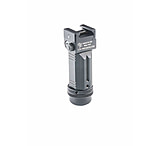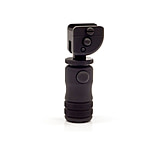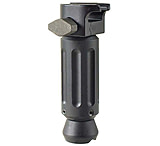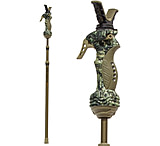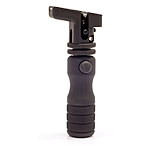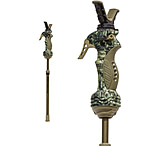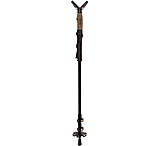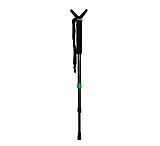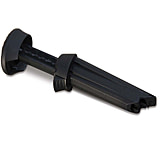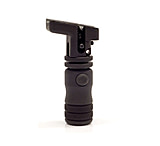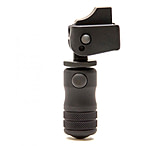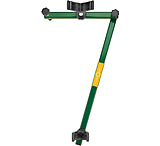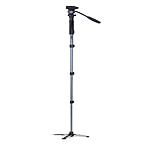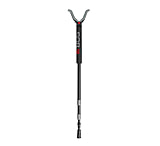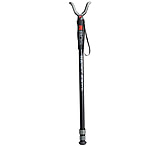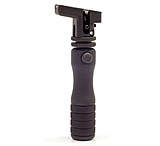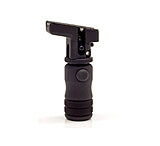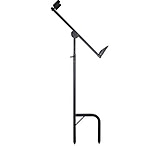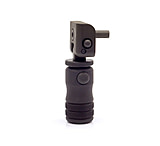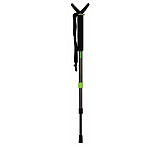Monopods - Camera Monopods, Shooting Monopod, Jacob Sticks, Unipods & More! — 21 products / 24 models — Page 1
We carry one of the largest and latest collections of monopods on the internet! A monopod, also known as a unipod, or Jacob Stick, is a single staff or pole used to help support DSLR cameras, binoculars, or other precision instruments in the field. Perfect for shooting video or fast photography and if you need a little extra stability.![]()
What is a monopod?
Monopods are one-legged tripods. They are lightweight; you can choose either an aluminum monopod or a carbon fiber monopod. While carbon fiber is lighter, aluminum construction tends to be more durable, but it comes to personal preference. There are several advantages to using a monopod over a tripod, such as added mobility and versatility. If you want crystal clear pictures from your digital camera, stability is vital. Still, you don't always have time to set up a tripod, so having a camera monopod handy is perfect for action shots! If you want to use longer shutter speeds but still be able to run to another location at a moment's notice, then make use of your new unipod. If you're out hiking or hunting, you can use a monopod for a wide variety of purposes. When used with a compass, your monopod becomes a Jacob Stick and will give you a better ability to get your bearings. If you see prey off in the distance, placing binoculars on your lightweight monopod will steady the glass enough to see greater detail, giving you a better chance to take down a prize-winning buck.
Many of our monopods are telescoping, so they easily extend or collapse to the length you need. You can choose between either three-section or four section monopods. Since they're so lightweight, unipods can be used as walking sticks or trekking sticks, so hikers love that they can minimize the gear they haul they need to carry without sacrificing performance. A monopod is ideal for running from one spot on the field and still taking steady, sharp pictures if you're into sports photography. And don't worry for a second about quality. We have top monopod brands such as Vanguard, Canon, and Primos Hunting!
Which is better, monopod or tripod?
The advantages of working with a monopod largely stem from the smaller size of the single-legged camera support. Tripods take a bit of floor space to spread out those three legs, and Monopods, in comparison, take up a tiny dot of floor space. With a monopod, you pick it up and go. The smaller profile also makes monopods more mobile. This is especially useful if you are shooting fast action and need to pick and move to follow the action. While having a tripod is more useful when shooting for photography with a long exposure time or wildlife photography and waiting for that perfect shot!
How to use a monopod?
Monopods are great to use as an anchor when you're shooting photography. You can think of the monopod as the third leg using your body as an anchor. You can use a monopod to pan and scan while shooting video. Simply lifting your monopod over your head gives your photography a new point of view while having a steady, stable shot. Monopods can also be used as a "beltpod," meaning the foot of the monopod can rest on the belt or hip of the photographer. The monopod becomes a selfie stick. When using a video monopod, you will get less camera shake than using a camcorder. If you wear a utility belt to hold your equipment, you can add a pouch to the front. This allows you to use your body to steady the monopod. This position may be helpful when the ground is particularly soft and unstable, such as snow or mud. Use the wrist strap and handgrip to improve stability. Most come with a wrist strap that's primarily used to carry the monopod around. However, you can also use this strap while shooting to keep the camera from moving around on the ball head. Telescoping monopods have leg locks to secure their leg sections. Depending on your personal preference, you can choose between flip locks or twist locks. Flip locks have a quick release. However, they can wear out sooner and require more maintenance.
Do I need a head for monopod?
A monopod can be an instrumental piece of equipment when you're using heavy zoom lenses and large telephoto prime lenses for sports and wildlife photography. Both types of photography often require you to stand for an extended time with heavy gear, and particularly in the case of wildlife photography, you can often find yourself needing to use slow shutter speeds in low light. There are various types of monopod heads available, and ball heads offer the most flexibility. They allow you to shoot in portrait or landscape orientation and angle your DSLR or mirrorless camera to adjust for any sloping of the monopod. Monopod heads add stability and function to an already valuable piece of photo gear. Fluid heads are the most widely used monopod head for shooting videos. A 2-way head is essentially a tilt and smooth panning base. It can be helpful for people who are shooting video while using a monopod, as it will undoubtedly produce a smoother pan.
Buy Monopods from OpticsPlanet
Shop at OpticsPlanet for a great selection of monopods and other photography items from digital cameras, digital camera accessories.
Other categories you might be interested in are 9mm Luger Ammunition, Motorcycle Goggles, MP3 Players, Multi-Tools, Multimedia Memory Cards.











